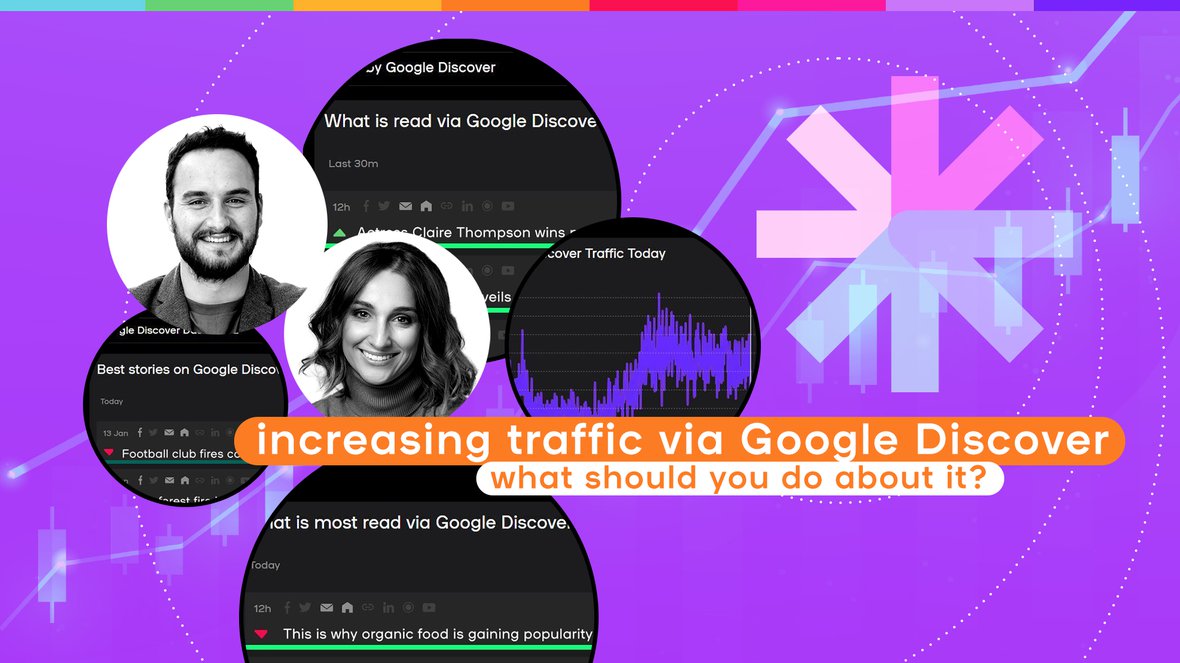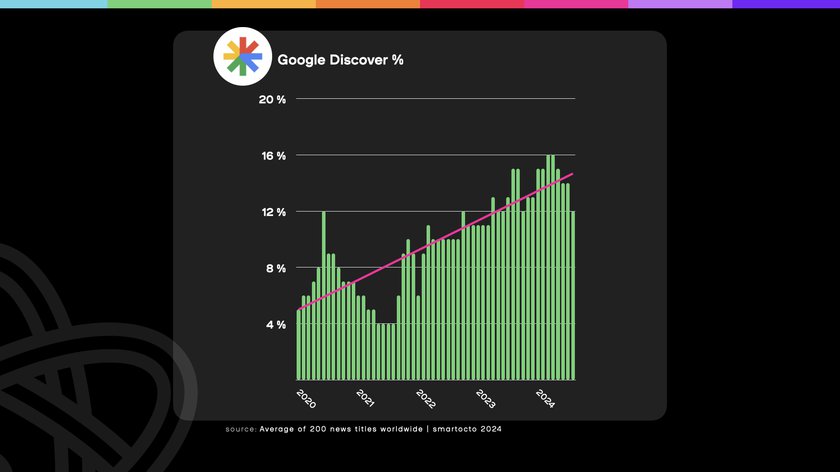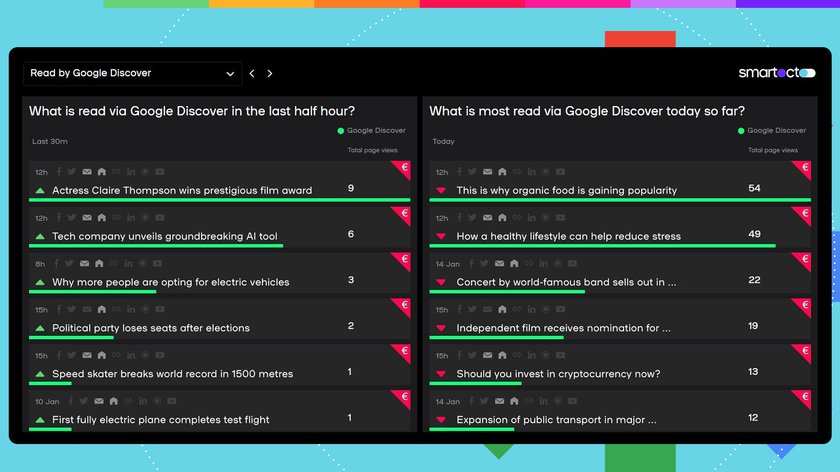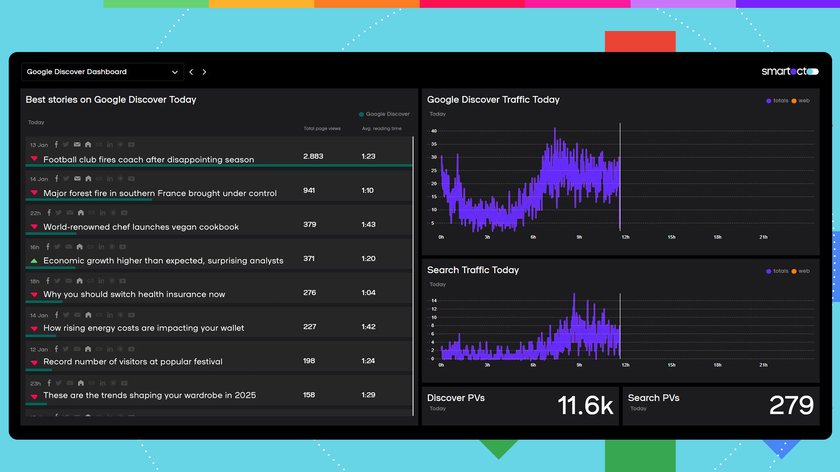Many of our clients are noticing the growing impact of Google Discover on their website traffic. As a data analytics company, the question we’re obviously asking is: how do you increase your visibility in this feed?
Nice question, even if we do say so ourselves. Natalia Zaba, teaching fellow at the Google News Initiative, affirmed some of our findings during the first webinar of the year. You’ll find some of her insights quoted in this blog.
What is Google Discover?
Let’s take a step back: what exactly is Google Discover? It’s essentially a personalised news feed embedded in various Google Search products. On Android devices, you can access it by swiping right from the home screen. It’s also visible when you open the Google app on phones and tablets (including iPhones and iPads), as well as in the Chrome browser on mobile devices. However, Discover is not available on desktops.
Google curates the feed using an algorithm and personalises it based on users’ behaviour across the web and apps. It features current content indexed by Google in accordance with their content policies. Traffic via Google Discover to news websites is growing in the last couple of years, a data study of smartocto shows:







